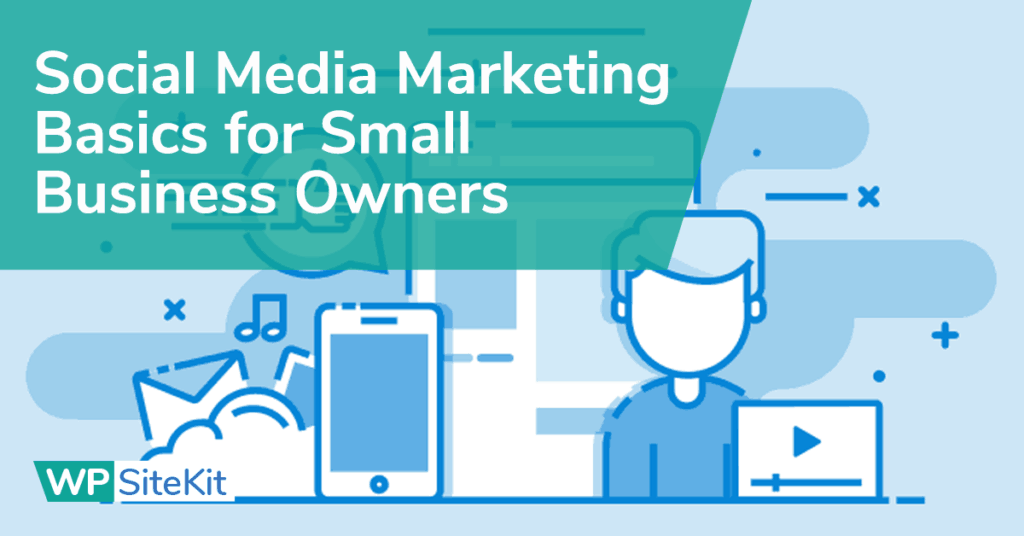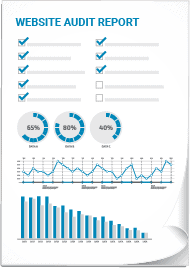So you’ve got a brand new website, and an exciting new opportunity to do business online.
Let me guess… you’ve already had a bunch of people yelling at you to hurry up and get your business on social media right?
Kind of a broken record at this point. But there’s honestly good reason.
Social media marketing is the new word of mouth. And we all know how important word of mouth is to small businesses.
The problem is, managing social media accounts is time consuming. Time is usually scarce. As are marketing budgets.
So how can you make sure you devote your efforts where they’ll matter most?
Simple, follow this guide!
Build Your Strategy First
To get the most out of your social marketing efforts, you’ll want to start with creating a sound strategy.
This can be as simple as a 1-page Google Doc. If you’re more ambitious, or have a social marketing team you’re going to be responsible for, a more in-depth brief would be called for.
If you like, you can definitely get pretty granular here. Researching and documenting ideal posting times and frequencies isn’t out of the question.
But there are 3 fundamentals that no business should skip. Let’s make sure to cover these first.
Develop your brand voice: Your brand is your business’s identity. So understandably, consistency is key here. Think long and hard about whether you want your brand to be playful, serious, authoritative, relatable, etc.
Craft your mission statement: Social marketing will be most effective if your motivation is clear, and connects with the sensibilities of your followers. What types of content will best help you engage with your target audience?
Document your social media goals: Without clearly defined goals, your efforts will likely languish. Do some research and hone in on a few high-impact objectives. Then write them down and include how you plan to measure KPIs.
Once you have these in place, it’s time to pick which social networks you want to use.
Which Social Media Networks are Essential for Businesses?
The short answer is: it depends.
If your business is primarily B2B, you may want to focus on LinkedIn. If you’re running a home decorating business, Pinterest might be an objective.
But in most cases (in 2018), Facebook and Instagram are the big 2 to consider regardless of your niche.So this is by no means a hard and fast rule, and I’d recommend at least experimenting with other platforms as you can. But assuming your time is in short supply, try starting simple.
Let’s do a bit of a deeper dive on how you can fast-track your own success on these two powerful platforms.
Facebook Best Practices
While Instagram is exclusively a visual format, Facebook should be treated no differently.
In fact, studies have shown that Facebook posts that contain images get 2.3x more engagement than that don’t!
Similarly, video content can produce great results and is even favored by Facebook’s algorithm. It’d be wise to consider at least testing video content with your audience.
But be aware that less than 20% of people have audio enabled when they watch Facebook videos, so make sure your video can tell a story without sound.
A few other tips to consider for marketing on Facebook:
-
- Use Facebook CTA’s (buttons) everywhere they’re allowed.
-
- Keep your posts short and sweet. Attention spans on social are remarkably short.
-
- Follow the pareto principle (80/20 rule). Only 20% of your content should be promotional.
- Schedule posts ahead of time, and at a regular frequency
Instagram Best Practices
Instagram may be owned by Facebook, but it still has its own algorithm, and its own set of best practices.
So don’t assume that these two platforms function in the same way.
Just including something visual isn’t enough on Instagram, and it’s a bit more difficult for your images to stand out from the crowd. So save your very best (and most distinctive) photos for Instagram.
Also, remember not to get lost in the day to day. Similar to planning out your brand voice for Facebook, you want your Instagram grid (home-page) to tell a clear story about your business.
A few other tips to consider for marketing on Instagram:
-
- Be consistent and use similar filters and editing tools with all of your photos
-
- Include locations, tag other brands, and mention fans whenever possible
-
- Leverage UGC (user-generated-content) – just be sure to give credit to the original poster
-
- Always include a handful of relevant hashtags in your posts
- Consider exploring Instagram stories to add personality to your brand
Other Social Media Platforms
As we mentioned earlier, Facebook and Instagram may be the two hottest platforms for small business owners, but there are plenty of others worth considering.
Twitter is great for daily interaction and direct engagement. Just make sure that your audience actually uses the platform first. Certain demographics are more likely to engage on Twitter than others.
LinkedIn is the place to be for B2B businesses. Professional connections are plentiful and there’s significantly less “noise,” so it can be easier to get your message across.
Pinterest is good for brands that are very visually oriented. Cooking, fashion and photography are a few of the verticals that excel on Pinterest.
Social Media Paid Advertising
The last core competency to consider with social media marketing, is paid advertising. Without a doubt, Facebook has one of the most robust platforms for engaging in PPC ads (Pay Per Click).
Here’s a complete guide that Facebook themselves created on what types of paid advertising you can do on their platform.
Now this isn’t something that you need to do. Nor is it going to be a success for every business.
But the fact remains, it can be a remarkably affordable way to explore new markets, test demand, and improve conversions through remarketing.
Boosting Posts
The simplest way to engage in paid advertising on social media, is to “boost posts” on Facebook.
This doesn’t require creating new ad copy, getting professional visuals made, or coming up with a new incentive.
All you’re doing with post-boosting, is promoting one of your existing posts. Facebook will push the post out to a larger audience than just your followers, and that can get new eyeballs on your product, service, or offer.
With an affordable price-tag and a simple-to-use interface, this is the easiest way to get started with paid advertising on social.
Targeting Niche Markets
Instead of investing in a full-scale marketing blitz in a new market, try testing out if your message resonates with the audience through a Facebook PPC campaign.
You can do this for as little as a few dollars a day, and still get decent impression and click-through data.
This is largely possible thanks to the incredibly granular targeting that Facebook allows.
By targeting, I mean that you can pick specific types of people to show your ads to, based upon any number of factors (eg: location, age, interests, gender, etc).
For example, if you own a fashion shoe company, you might want to target women, age 20-50, living in high-income urban areas. Facebook’s audience targeting capabilities make this a breeze.
You can actually go to quite silly extremes with this. One of my favorite social marketing stories involves a guy literally targeting only his roommate with creepy social ads.
This probably won’t be effective for your business, but hopefully you get the picture.
Remarketing on Social Media
Remarketing is the practice of putting specific ads in front of people that are already aware of your product or service.
Think of it like you’re attempting to only show advertisements to warm leads. So understandably, the ROI can be quite high.
You’ve definitely seen this in action if you’ve ever visited Amazon.com. Ever notice how specific items you’ve viewed on Amazon, seem to start following you around the internet, and even on your social networks?
That’s remarketing at work.
In fact, some business owners initially shy away from engaging in remarketing, because they’re afraid to come across as intrusive or pushy.
But when done right, remarketing is anything but.
Larry Kim, a renowned social marketing expert, can explain this better than we can. So check out this article he wrote on the subject.
The bottom line is this… remarketing can deliver pretty astounding ROI. After all, you’re basically just going after qualified leads.
Try putting time-sensitive incentives, email-gated resources, and other action driving messages in front of former website visitors. Just set modest budgets and let the data drive your decisions.
Test. Iterate. Improve.
This guide hardly scratches the surface of social media marketing. But hopefully you’re feeling well-equipped to at least dip your toes in the water.
And that’s what we’ve seen work best for small businesses for as long as we can remember.
Get the basics right, invest modestly, and stay consistent. Monitor your KPIs (Key Performance Indicators) and measure for success.
Then take your learnings, improve your efforts, and try again.
If you strike upon something that starts delivering fast results, step on the gas and ride that wave!




